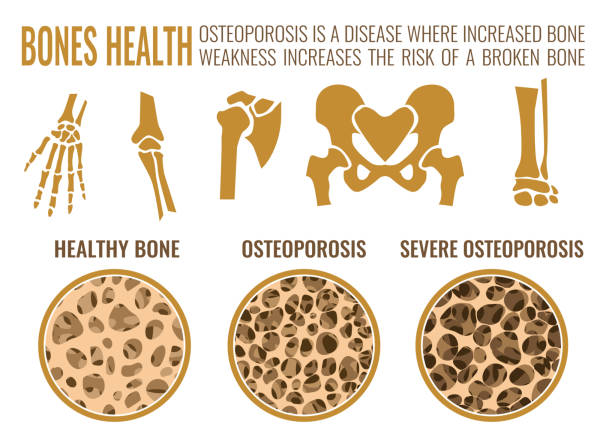Osteoporosis – a functional approach
Most people connect osteoporosis with stooped posture or weak bones that fracture easily, but did you realize that it is also known as a silent killer? Some people with osteoporosis experience warning signs like back pain or difficulty twisting and bending. Others have no symptoms at all until a bone is fractured and it’s too late. Sadly, the survival rate for the elderly after a hip fracture is low due to complications like blood clots and the development of pneumonia.
The good news is that osteoporosis can be prevented and sometimes even reversed through targeted nutrition and lifestyle measures. You can improve both the density and the quality of your bones by taking a whole-body approach that gets at the root of how osteoporosis develops in the first place.
Popular wisdom presents calcium deficiency as the cause of osteoporosis, but there is much more to it than that. Bones are constantly being broken down and rebuilt in a process called remodeling. When the breakdown happens faster than rebuilding, the bones begin to thin, weaken, and become brittle. Let’s take a look at some of the factors that cause this to happen.
- Inflammation due to poor food choices, toxins, or stress
- High sugar, alcohol, caffeine, or salt intake
- Phosphoric acid in sodas
- Lack of movement
- Smoking
- PPI or acid-blocking medications
- Steroidal medications
- Poor nutrient absorption due to celiac disease or food sensitivities


Some early warning signs that you are at risk for osteoporosis include:
- Brittle or flattened nails with ridges
- Dry, brittle hair
- Cracks at the edges of the mouth
- Periodontal disease
Testing
Most doctors use a DEXA scan to screen for osteoporosis. DEXA is a low-dose x-ray that allows them to look at a person’s bone density. The downside to the DEXA scan is that it looks at bone density but not at bone quality. For the bone quality it is important to check a number of nutrient levels such as:
- Vitamin D
- Vitamin K
- Trace minerals
- Calcium/magnesium balance
Diet and Lifestyle for Healthy Bones
Contrary to popular opinion, consuming dairy products is not particularly helpful in preventing bone loss or fractures. You can usually get enough calcium to maintain healthy bones by eating an anti-inflammatory diet rich in plant-based foods. Calcium from food-based sources may be preferable to supplementation to avoid calcification of arteries.
To improve the density and quality of your bones, avoid the foods, beverages, and other factors listed above that contribute to bone loss. Focus on including foods naturally rich in minerals and anti-inflammatory compounds. These include:
- Leafy greens
- Colorful vegetables
- Nuts and seeds like sesame and chia
- Sardines, herring, or mackerel.
Targeted supplements
Functional medicine practitioners will also recommend targeted supplements based on your specific needs. These may include:
- Vitamin D
- Vitamin K
- Magnesium
- Trace minerals, including boron and silica
- Essential fatty acids
- Berberine
Physical activity
Another crucial factor for preventing and reversing osteoporosis is physical activity. Doing strength or resistance exercises three times per week improves both bone mass and bone quality. Try yoga, pilates, interval training, resistance bands, or walking with ankle and wrist weights.
If you are concerned that you are at risk for developing osteoporosis, now is the time to seek expert guidance. Dr. Sisu can help you improve your bone health and prevent the painful consequences of osteoporosis. Call to schedule a consultation today!

